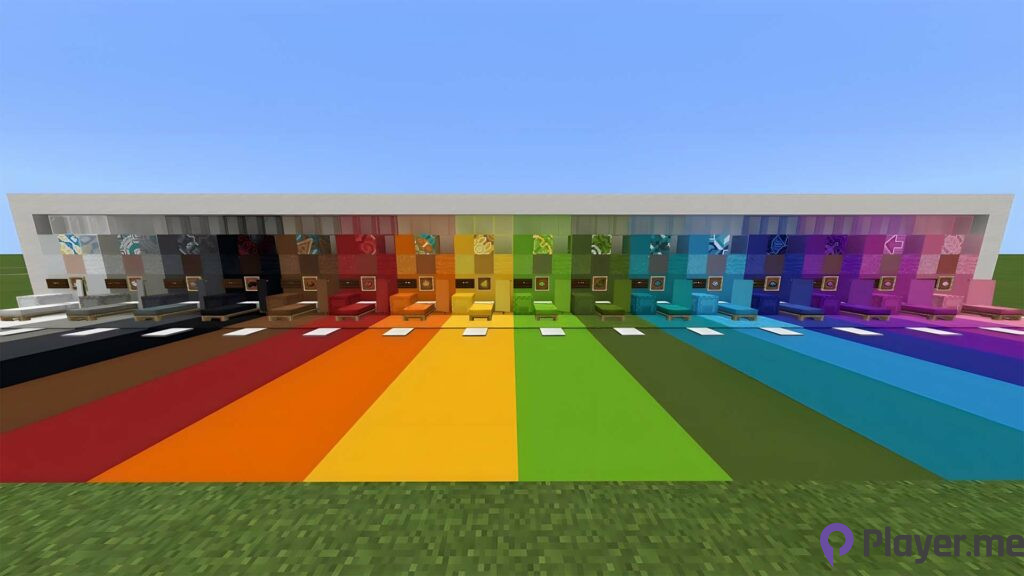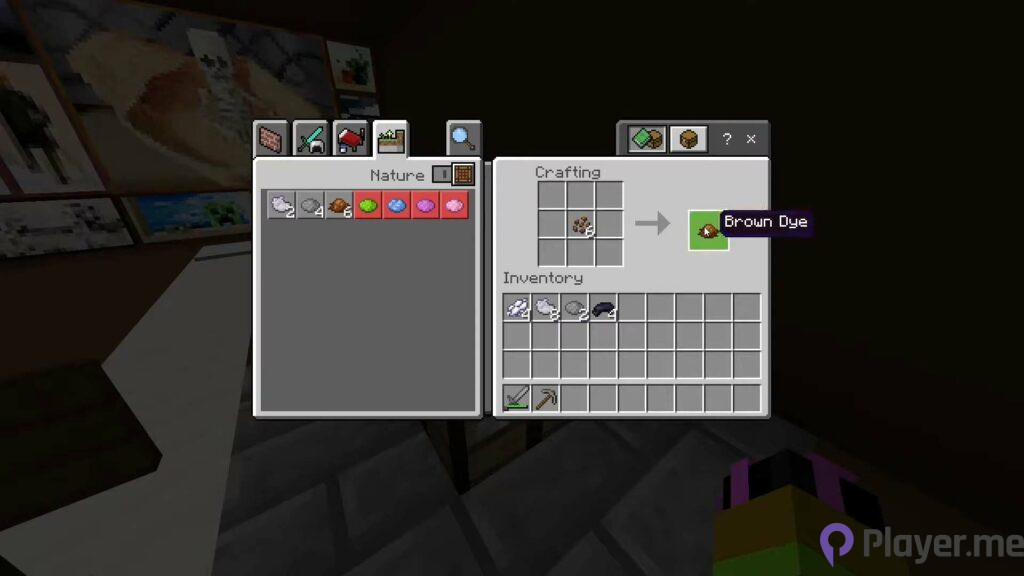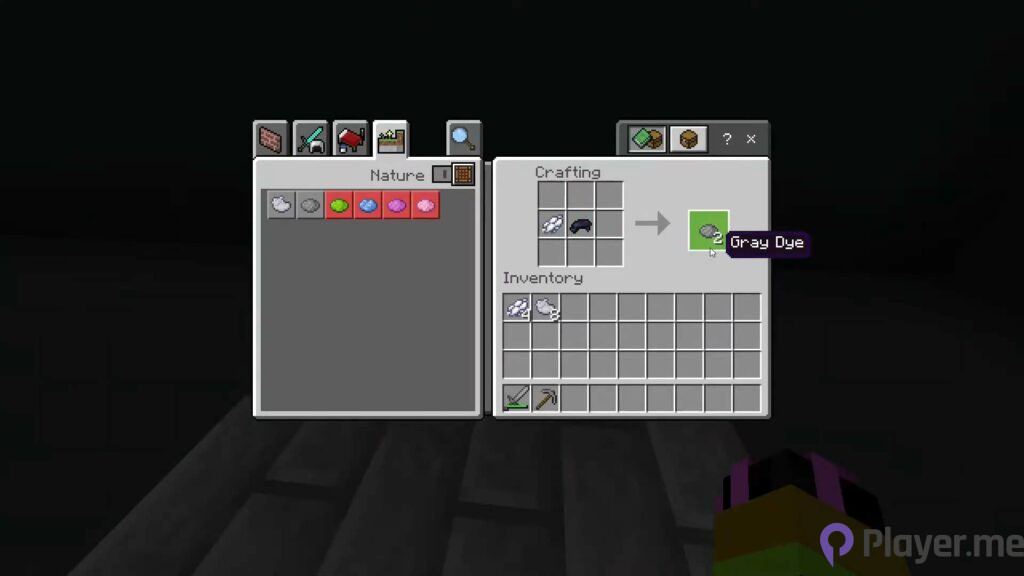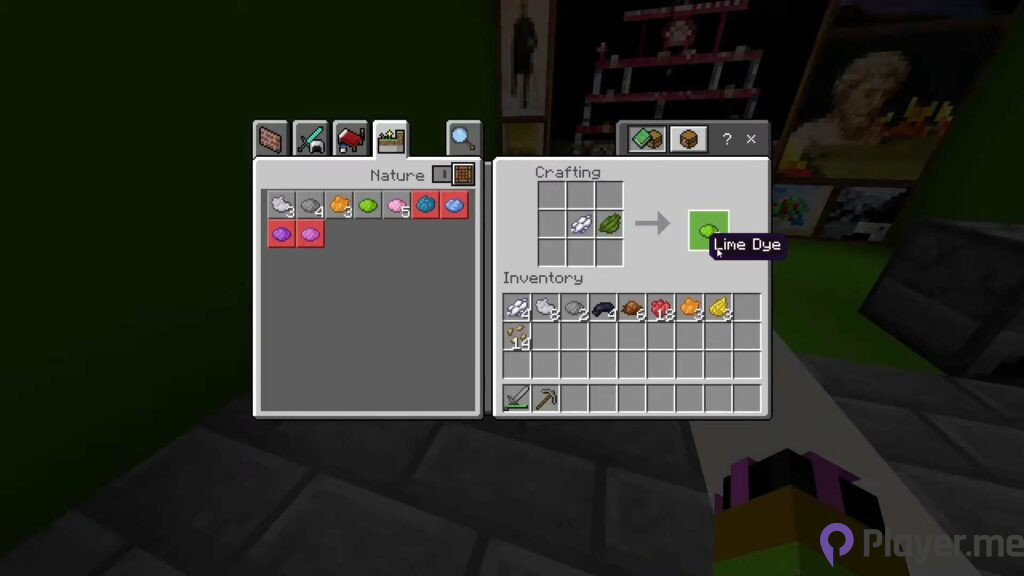Minecraft is a beloved game that lets us delve into expansive, blocky worlds, testing our creativity and imagination. It’s more than just mining and crafting — it’s a canvas where every block can tell a story. But there’s a colourful secret in this world. Let’s talk about how to make all dye colours in Minecraft.
Beyond the usual stone, wood, and ores, there’s a palette of colours waiting to be unlocked. These aren’t just decorative — they bring your creations life, personality, and warmth.
Related: 7 Best Games to Play if You Like Minecraft
All Dye Colours in Minecraft

Minecraft is more than just blocks and creatures. From the grandest castles to the tiniest details, dyes play a pivotal role in making your creations stand out. Here are all the 16 dye colours in Minecraft:
- Black
- Blue
- Brown
- Cyan
- Green
- Grey
- Light blue
- Light grey
- Lime
- Magenta
- Orange
- Pink
- Purple
- Red
- White
- Yellow
These versatile dyes allow you to colour items like wool, candles, banners, and even fireworks. But that’s just scratching the surface. Players craving more shades have tools and mods to customise further — the art of dyeing stretches to armours, beds, concrete, and beyond.
Related: 5 Best Minecraft Farms for Beginners
How to Make All Dye Colours in Minecraft?

The true magic lies in mixing and matching, especially with leather armour. A kettle becomes your palette, offering hundreds of unique shades and unlocking a world where your Minecraft creations can shine.
So, let’s talk about how to make dye colours in Minecraft.
Black
To get black dye in Minecraft, you have two options. The most common is the Ink Sac, collected by defeating squids. Alternatively, there’s the rarer Wither Rose left behind when the Wither defeats a mob. Given the rarity and other uses of wither roses, using ink sacs for black dye might be the better choice for players. It’s one of the fundamental dye colours in Minecraft.
Blue
Obtaining blue dye in Minecraft offers two routes. The first is through Lapis Lazuli, a dark blue ore primarily used in enchanting. Players might prefer conserving it since each enchantment needs a piece of Lapis. The alternative is cornflowers, which might be a more viable choice. These blue flowers appear in meadows, plains biomes, and flower forests.
Brown

Brown dye stands out in Minecraft, crafted exclusively from cocoa beans. These beans are spotted in jungles, clinging to tree sides, and can be cultivated on jungle wood. When fully grown, they yield two to three beans. Each cocoa bean can then be transformed into one unit of brown dye using a crafting table.
Cyan
Being one of the best dye colours in Minecraft, cyan dye adds a vibrant touch to your Minecraft world. Players can produce two cyan dye units by blending blue and green dyes on a crafting table. It’s a simple process, yet the outcome can greatly enhance your creations, giving them a fresh and lively hue.
Green
Creating green dye is more intuitive than mixing blue and yellow dyes in Minecraft. The sole method to procure it is by smelting a cactus block in a furnace. This process grants you one green dye and a smidge of experience. Since cacti can be ceaselessly cultivated, producing green dye in large quantities becomes straightforward.
Grey

Crafting grey dye in Minecraft showcases the beauty of blending. Unlike some colours that have intricate methods of production, grey is straightforward. To make it, simply merge one piece of black dye with one piece of white dye on a crafting table. This union produces two units of grey dye, perfect for adding a muted touch to your creations, blending the light and dark hues of the game.
Light blue
Light blue dye in Minecraft has a serene touch that can be easily crafted. Just as the white dye can modify other shades, it combines harmoniously with blue dye to produce two units of light blue. Alternatively, the game offers a floral route: The blue orchid. This unique flower, native solely to swamps, can be converted into one piece of light blue dye, adding a calm splash to your builds and reflecting the tranquil waters of its native biome. It is one of the best looking dye colours in Minecraft.
Light grey
As one of the unwanted dye colours in Minecraft, light grey dye in Minecraft offers a subtle charm. Like its darker counterpart, combining one black dye with two white dyes yields three units of light grey. Alternatively, a mix of grey and white dye produces two. Nature also lends a hand: You can use the Azure Bluet, Oxeye Daisy, and White Tulip, all found in plains and flower forests.
Lime

Lime dye in Minecraft bursts with vibrancy, adding zest to your creations. To achieve this lively shade, simply blend green dye with white dye — voilà, two units of lime dye are at your fingertips. Much like the cyan, this hue stands unique, with no alternate routes for crafting.
Magenta
Magenta dye in Minecraft offers many crafting methods. A popular route is blending pink with purple dye, resulting in two magenta units. Directly merging base colours — two red, one blue, and one white — gives four magenta dyes. Alternatively, one pink, one blue, and one red results in three. Nature provides, too: Alliums from flower forests or meadows grant one dye, while forest-based lilacs give a double dose of this vibrant hue. It is one of the best dye colours in Minecraft that you can use to make your items look energetic.
Orange
Orange dye in Minecraft exudes warmth and vibrancy. Mix red and yellow dyes on a crafting table to craft this cheerful shade, producing two orange units. The game offers a floral alternative for conserving red and yellow dyes. Seek out orange tulips scattered across meadows, flower forests, and plains biomes.
Pink

As one of the softest looking dye colours in Minecraft, pink dye is a delicate touch to any creation. To craft this gentle shade, blend white and red dyes, resulting in two pink units. Nature offers a direct path, too: Pink tulips and peonies. While pink tulips, found in flower forests, meadows, and plains, provide one dye, towering peonies from forests grant a double helping of this soft hue.
Purple
Purple dye in Minecraft offers a rich hue, merging the depth of blue with the warmth of red. Players receive two units of this royal shade by pairing red and blue dyes on a crafting table. Given the absence of purple flowers in the game’s landscape, this blending method stands unique, presenting the only route to achieve this vibrant colour in your builds.
Red
Red dye in Minecraft, a primary colour burst, springs from various sources. Poppies, red tulips, rose bushes, and even beetroots can be crafted to produce this hue, with rose bushes granting two units. While poppies thrive in forests, plains, and meadows, red tulips prefer flower forests and grasslands.
White

As one of the primary dye colours in Minecraft, white dye exudes purity and versatility. Players have two routes to craft it: Using Bone Meal or the Lily of the Valley. Placing either on a crafting table yields a unit of this pristine hue. Bone meal, derived from bones, stands as one source. At the same time, lilies of the valley, delicate white flowers native to forest biomes and abundant in flower forests, offer an alternative natural touch.
Yellow
Concluding our colour journey, we arrive at yellow dye in Minecraft. This sunny hue springs from two floral sources: The ubiquitous dandelion and the taller sunflower. Dandelions, prevalent in plains biomes, forests, and meadows, can also sprout from bone meal use. Sunflowers, a rarer find restricted to sunflower plains, have a bonus — they deliver a double dose of this vibrant shade when crafted.
For the moment, that wraps up our insights on dye colours in Minecraft and their crafting methods. Stay tuned as we delve deeper into Minecraft topics in our upcoming articles.
Frequently Asked Questions
How Many Dye Combinations Are There in Minecraft?
Dye colours in Minecraft are a collection of sixteen unique items. Their purpose? To change the hue of wool, terracotta, particular creatures, banner patterns, boxes, glass, concrete powder, candles, beds, firework stars, and the text on signs.
What Is the Hardest Dye Colour to Get In Minecraft?
While primary shades are more accessible, brown and magenta are elusive. Brown’s source, cocoa beans, are found in deserts or through trades. As for magenta, it’s a colour with multiple crafting steps.
Why Is Purple Dye So Rare?
Historically, creating the first shades of purple took a lot of work. Makers had to painstakingly crush sea snail shells, extract their purple mucus, and sunbathe it for precise durations. This intricate process rendered the colour a rare commodity, making it a prestigious emblem of wealth and status.
Author Profile
- My journey into the world of video games began at four, when I was first introduced to arcade machines in 1996. Over the past decades, I've been fortunate enough to witness the incredible evolution of gaming, as it has grown from a niche hobby to a thriving art. Today, I'm dedicated to creating content that celebrates all genres of games. We will talk about them at Player.me.





